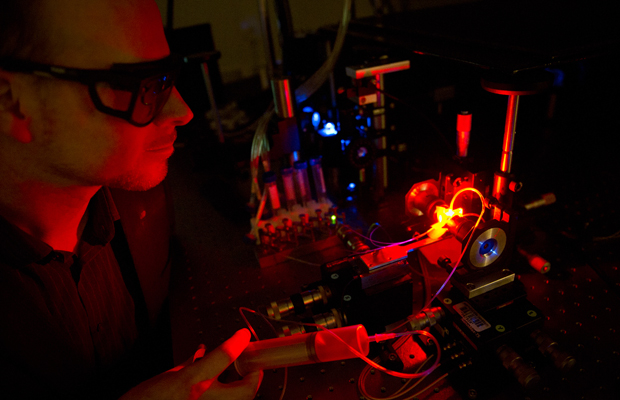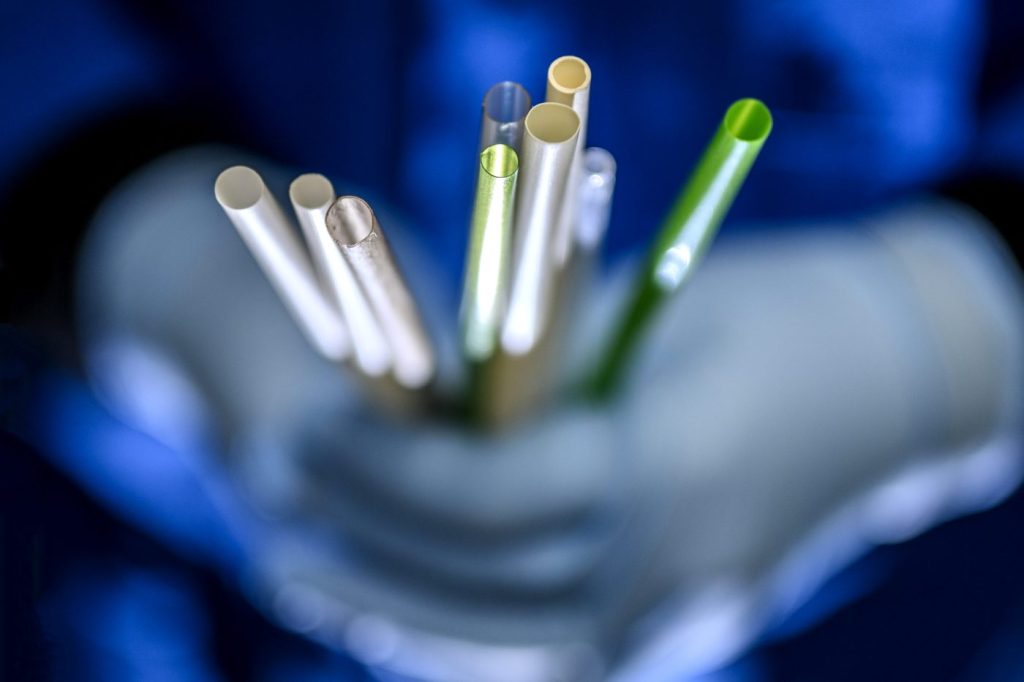Laser show — for a cure

The naturally occurring antibiotic Actinomycin D (ActD) was approved by the Food and Drug Administration as a chemotherapy drug in 1964 and has been widely used for nearly 50 years to treat a variety of tumor types. Since then, scientists have discovered that ActD works by blocking DNA transcription, the process that transcribes DNA into RNA, a macromolecule that codes for the proteins necessary for cell survival.
Inhibition by ActD is a good thing in rapidly dividing and transcribing cancer cells, but healthy cells are also susceptible to ActD, which makes it toxic, like many forms of chemotherapy.
Despite its long history, the molecular details of ActD’s function remained a mystery — until now.
“If you don’t know how it works, then you can’t design a new molecule that has the same characteristics [but less toxicity],” said Mark Williams, a physics professor in the College of Science at Northeastern University. “This is why we decided to study it.”
Williams and his experimental biophysics team used “optical tweezers” to probe the molecule and its interaction with DNA to determine the underlying mechanism by which ActD prevents transcription.
The findings were published on Feb. 10 in the journal Nucleic Acids Research.
Optical tweezers, researchers noted, fix a single DNA molecule in place using the force of tightly focused laser beams. “Once trapped, DNA may be stretched along its length,” said Micah McCauley, a senior research scientist in Williams’ lab. “Using our instrument, variable tension may be applied down to picoNewton precision.”
“In the cell there are forces exerted all the time,” Williams said. The protein RNA polymerase, for example, disrupts DNA’s double helix in order to copy its sequence into RNA. In the experimental setting, Williams’ lab uses lasers to achieve this destabilization.
Once the DNA is destabilized, ActD finds its way inside the double helix. In the body’s cells, the DNA zips back up after the polymerase moves away, leaving ActD securely in place and thus preventing future transcription. In the lab, the lasers simply relax their force on the DNA.
By mimicking the in vivo activity through this kind of manipulation, Williams’ team could precisely quantify changes in the DNA structure during its interaction with ActD. “We’re taking a dynamic picture of what’s happening,” he said. “We show how much it has to change dynamically in order for the binding to occur.”
With this information, the team can then provide a model that explains the drug’s observed action in cells.
Meriem Bahira, an undergraduate researcher in Williams’ lab, is performing follow-up studies that apply the same strategy to a similar synthetic molecule that could one day be used as a cancer drug itself. “Our technique is special in the sense that it is a single molecule technique so we can get really small details from it,” Bahira said. “Bulk experiments are useful in that they give you averages. This gives you details about the process.”





